 In 2020, the Republic of Uzbekistan officially nominated its candidacy to host the 25th session of the UNWTO General Assembly in Samarkand in 2023. UNWTO informed all member states of the organization about the initiative of the Uzbek side.
In 2020, the Republic of Uzbekistan officially nominated its candidacy to host the 25th session of the UNWTO General Assembly in Samarkand in 2023. UNWTO informed all member states of the organization about the initiative of the Uzbek side.
In 2001, Samarkand was included in the list of UNESCO World Heritage Sites as “City - the Crossroads of World Cultures”, and is the most recognizable historical city of Uzbekistan for the international community.
Samarkand was founded in the VIII century BC and is one of the oldest cities in the world, the main point of the Great Silk Road for more than 2,000 years as well as the center of science and culture of the Middle East.
In Samarkand, preserved architectural monuments such as mosques, madrasahs, mausoleums and residential buildings built in the Middle Ages in the Islamic style and are the main attractions for tourists. The Republic of Uzbekistan attaches great attention and importance to the preservation and restoration of cultural heritage sites of the Uzbek nation.
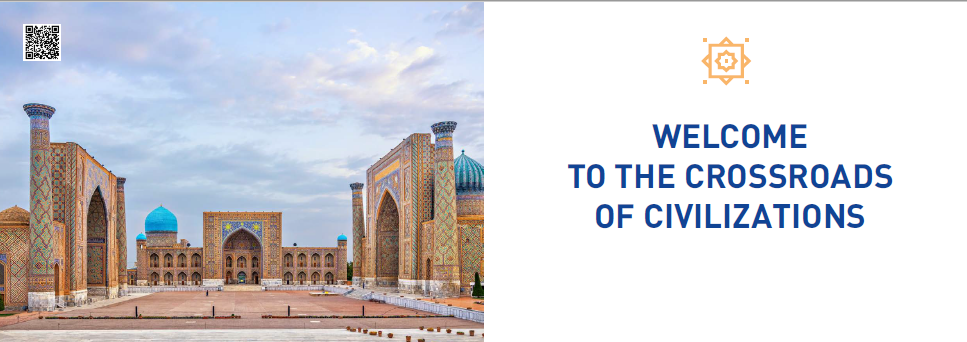
There are 483 objects of cultural and historical heritage in Samarkand, and 1,607 objects in the Samarkand region.
The city was the capital of the empire of Amir Temur and the Timurid dynasty In the XIV century, in the era of which the vast majority of the city's architectural masterpieces were built.
The most visited attraction in Samarkand is Registan Square (15th century), the center of which is three madrasahs: Ulugbek, Sherdor and Tillya-Kari. This ensemble has become a unique example of the art of urban planning and architectural design, one of the brightest examples of Islamic architecture.
The most important architectural complexes of Samarkand were formed in the XIV-XV centuries, and their construction and decoration were carried out by the masters of the East. In particular:
- the Ancient Tomb of Amir Temur;
- the Guri Emir Mausoleum;
- the complex of mausoleums - ShahiZinda;
- the Bibi-Khanim mosque (in honor of Amir Temur’s beloved wife);
- one of the most important Islamic shrines in the entire Muslim world - The memorial complex of Imam Al-Bukhari;
- the observatory of the outstanding mathematician, astronomer and poet Mirzo-Ulugbek and others.
The modern area of the territory of Samarkand is 120 km², the population of the city is 552 thousand people, the Samarkand region is more than 4 million inhabitants.
Samarkand has great potential and is ready to host the UNWTO General Assembly session and other international events at the highest level.
A large-scale works is underway to create favorable conditions for visitors to the city, develop tourism infrastructure, expand and improve the quality of transport services in the Samarkand region.
A tourist complex“ Samarkand Touristic Center” is being builton an area of 212 hectares on the coast of the rowing canal in Samarkand. The commissioning of the facility is scheduled for the first quarter of 2022. This complex includes the New Renaissance congress center, 2 five-star and 6 four-star hotels (total number of rooms is 1,324 rooms), recreation areas with restaurants, shopping centers, an amphitheater, as well as artificial lakes and ponds.
Also, the construction of the “Eternal City” caravansaray is underway, which will become a “visiting card” of the culture of Uzbekistan and will include workshops for artisans of woodcarving, ceramics, pottery, production of silk paper from mulberry trees, jewelry and carpets, chefs and others.
Highways will conveniently connect this tourist center with the international airport, Samarkand railway station, the mausoleum of Imam Al-Bukhari, Registan square and other attractions of the city and region.
In addition, the construction of a new passenger terminal at the Samarkand International Airport is underway, which will receive a modern design and will be able to serve 800 passengers per hour (or about 1.5 million passengers per year).
The unique culture and traditions of the inhabitants of the Samarkand region for foreign tourists is revealed by the tourist village “Konigil”, in which a paper mill is located (made by an ancient technology, used long before the advent of paper machines). The village is famous for its unique handicrafttraditions, the purest nature, shady trees, and the nearby flowing “Siab” river.
According to UNWTO Global Report Research on Food tourism, 79% of travelers make travel plans after studying the calendar of gastronomic events and the peculiarities of the national cuisine. In this regard, the gastronomic street of Samarkand is gaining popularity, where more than 30 cafes and restaurants of Uzbek, Spanish, Italian, French and other national cuisines function around the clock.
According to the American Internet publication “The Huffington post”, Samarkand is included in the top 50 cities in the world that must be visited in life, and in 2020, Uzbekistan was awarded the “Best emerging destination” by Travel+Leisure India’s Best Awards thanks to Samarkand.
Uzbekistan with its famous tourist destinations (Tashkent, Samarkand, Bukhara, Shakhrisabz, Khiva and others) regularly receives the highest marks according to international rating agencies, media and experts in the field of tourism.
In 2019, according to UNWTO, Uzbekistan entered the top five countries with the most dynamically developing tourism industry and The Guardian recognized the country as the best tourist destination in the world.
Uzbekistan is:
Efforts to develop international cultural and humanitarian ties between Samarkand and foreign countries are highly appreciated. Since 1997, every two years, Samarkand, together with UNESCO, has hosted the “SharqTaronalari” International Music Festival, aimed at popularizing, preserving and developing the best achievements of world musical art.
In 2018, at the initiative of the President of Uzbekistan Sh.M. Mirziyoyev, the International University of Tourism “Silk Road” was established in Samarkand under the Ministry of Tourism and Sports, in order to strengthen the human resources of the country’s tourism industry and international academic cooperation in the field of tourism, development of historical and cultural - humanitarian ties of the member states of the Shanghai Cooperation Organization.
Samarkand has a wealth of experience in holding events together with UNWTO. So, in 1994 in Samarkand, a joint meeting of the Silk Road countries was held with the UNWTO and UNESCO (the Samarkand Declaration on the Development of Tourism on the Great Silk Road was adopted), in 2014 the 99th session of the UNWTO Executive Council took place, in 2020 the 65th session of the UNWTO European Commission was held in the videoconference format (originally planned offline in the mode).
Moreover, in Tashkent with the support of the UNWTO, the annual Tashkent International Tourism Fair “Tourism on the Silk Road” was established in 1995, in 1999 in Khiva, together with UNWTO and UNESCO, with the participation of the Council of Europe, the International Council for the Conservation of Monuments and Sites (ICOMOS), and the Organization of the World Heritage City (OWHC), a seminar on tourism and culture was held (the Khiva Declaration on Tourism and the Preservation of Cultural Heritage was adopted), in 2002 the
4th International Meeting was held within the framework of the Silk Road project (the Bukhara Declaration on Tourism on the Silk Road was adopted).
Thus, the holding of such a significant international UNWTO event in Samarkand will serve to further popularize and rationalize the use of the world cultural heritage, develop the national tourism sector of the republic, improve the well-being of the population, as well as strengthen the image of Uzbekistan as a world tourist destination.
You can familiarize yourself with the tourist potential of Samarkand in our brochure:
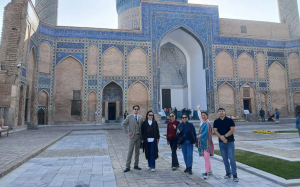
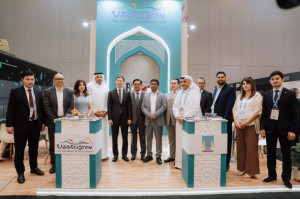
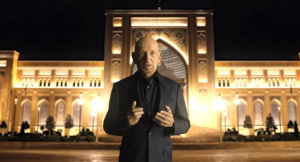
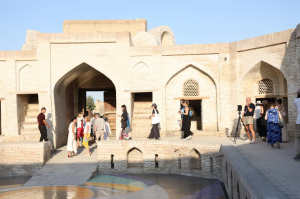
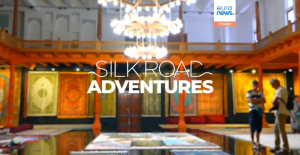
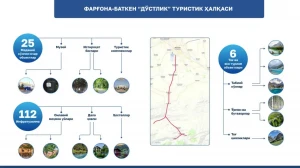



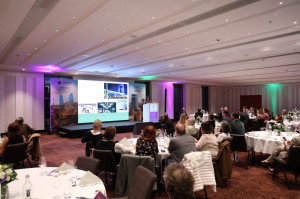
Workhours: 9:00-18:00, Mn-Fr
For any questions
ПОЛЬЗОВАТЕЛЬСКОЕ СОГЛАШЕНИЕ
1. Определение
Настоящее Пользовательское соглашение (далее — Соглашение) является Публичной офертой в соответствии со статьёй 367 Гражданского кодекса Республики Узбекистан от 21.12.1995 (https://lex.uz/ru/docs/111181#162763) и регулирует порядок использования материалов и Сервисов сайта Государственного унитарного предприятия «Национальный PR-центр» (далее — Предприятие), размещённого на веб-сайте и поддоменах Национального Туристического Информационного Центра: https://uzbekistan.travel/ (далее — Сайт).
Посетитель и (или) Пользователь подтверждает, что ознакомлен, полностью и безоговорочно принимает все условия настоящего Соглашения и обязуется их соблюдать.
Использование Сайта Пользователем означает полное принятие данного Соглашения «как есть» в форме акцепта.
Соглашение вступает в силу с момента посещения любой страницы Сайта и (или) регистрации на Сайте и действует бессрочно во время пользования Сервисами Сайта.
Настоящее Соглашение обязательно для исполнения всеми Посетителями и Пользователями без каких-либо изъятий и дополнительных согласований.
Пользователь обязуется самостоятельно проверять актуальную редакцию Соглашения на Сайте перед использованием Сервисов.
2. Предмет Соглашения
Предметом настоящего Соглашения являются правила использования материалов Сайта и предоставление Посетителю и (или) Пользователю возможности использования Сервисов Сайта.
Предприятие является правообладателем исключительных прав на Сайт в целом и на его составные части, включая все виды контента: логотипы, товарные знаки, тексты, статьи, аннотации, иллюстрации, фотографии, графику, аудио- и видеофайлы, пользовательские интерфейсы, дизайн, структуру, программы, базы данных.
Я прочитал(а) и соглашаюсь с условиями использования сайта и политикой конфиденциальности.
